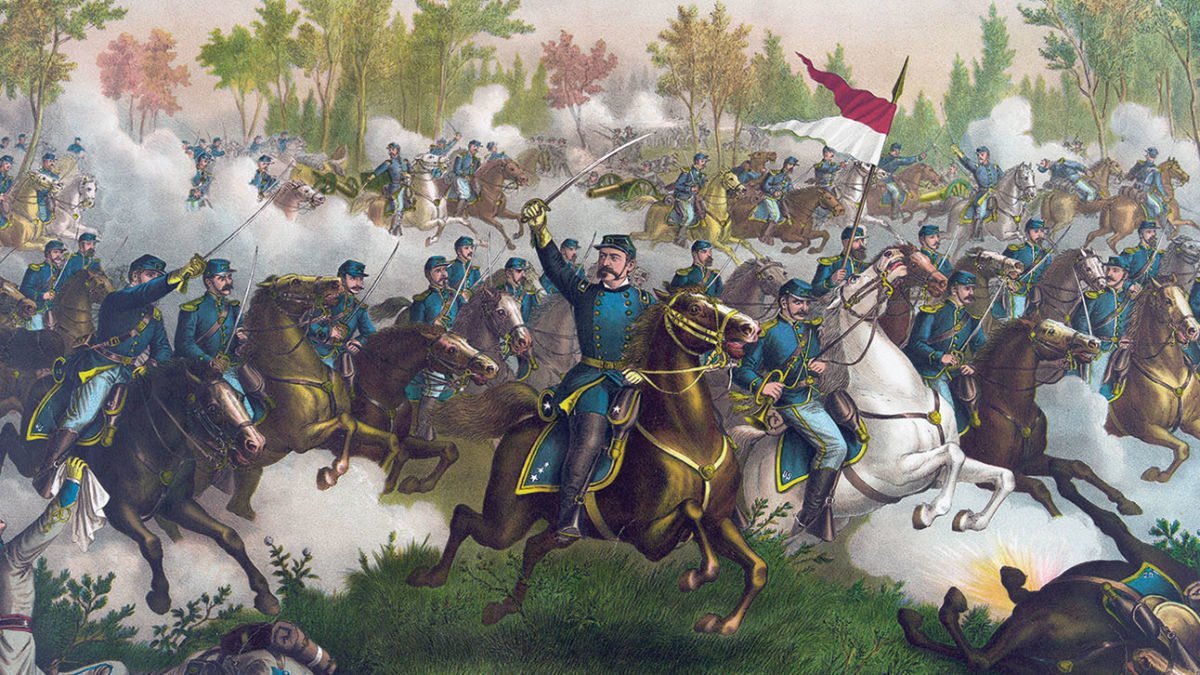
The Battle of Cedar Creek
October 19, 1864
“Jumping my horse over the rails, I rode to the crest of the elevation, and there taking off my hat, the men rose from behind the barricades with cheers of recognition.”
Sketch of Sheridan’s Ride
Sheridan's victory at Cedar Creek broke the back of the Confederate army and ended effective Confederate resistance in the Shenandoah Valley for the remainder of the war. President Abraham Lincoln rode the momentum of Sheridan's victories in the Valley, along with Gen. William T. Sherman's successes in Georgia, to re-election. Cedar Creek was one of the two largest battles fought in the Shenandoah Valley.
At dawn on October 19, the Confederate Army of the Valley under Gen. Jubal Early surprised the Federal army at Cedar Creek. Three Confederate divisions under Gen. Gordon had made a difficult night march along a mountain path to strike the Federal left flank before sunrise. Crossing the North Fork of the Shenandoah River, Gordon’s divisions and Early’s forces on the left soon routed the Federal VIII and XIX Army Corps. The Federal army, under the command of Gen. Horatio Wright during Sheridan’s absence in Washington, retreated north some distance. The Federal line began to stabilize as elements of the Federal VI Corps fought hard in and around the cemetery on the west side of Middletown. Many hungry Confederates temporarily abandoned the pursuit to plunder the Federal camps for food. Several of Early’s commanders urged another assault on the Federal lines but Early demurred. Gen. Sheridan had returned from Washington the night before and had overnighted in Winchester. Upon hearing news of the battle, he rode quickly from Winchester, rallying his straggling troops, along the way. In the afternoon, he launched a crushing counterattack, which recovered the camps lost in the morning and routed Early’s forces.





